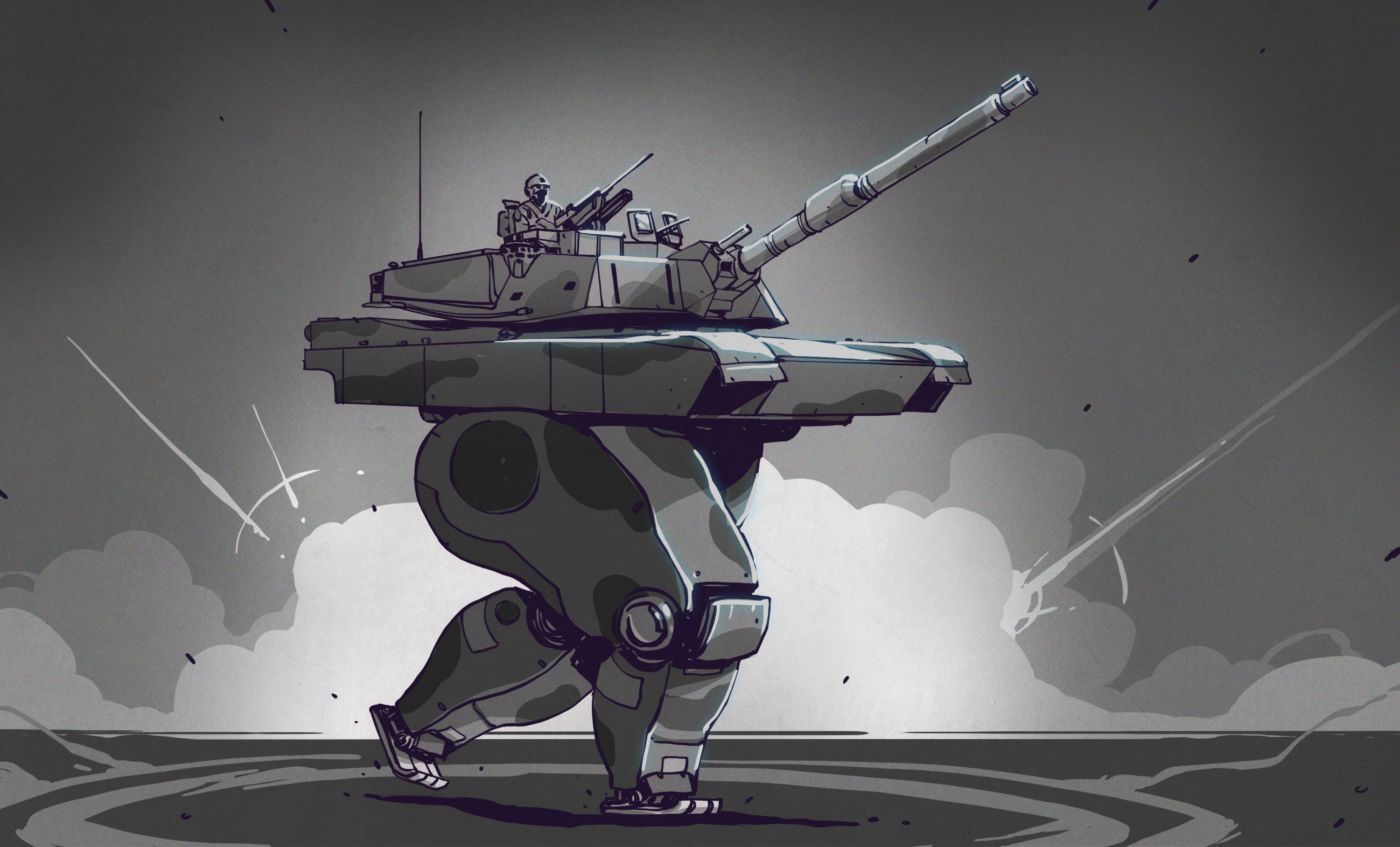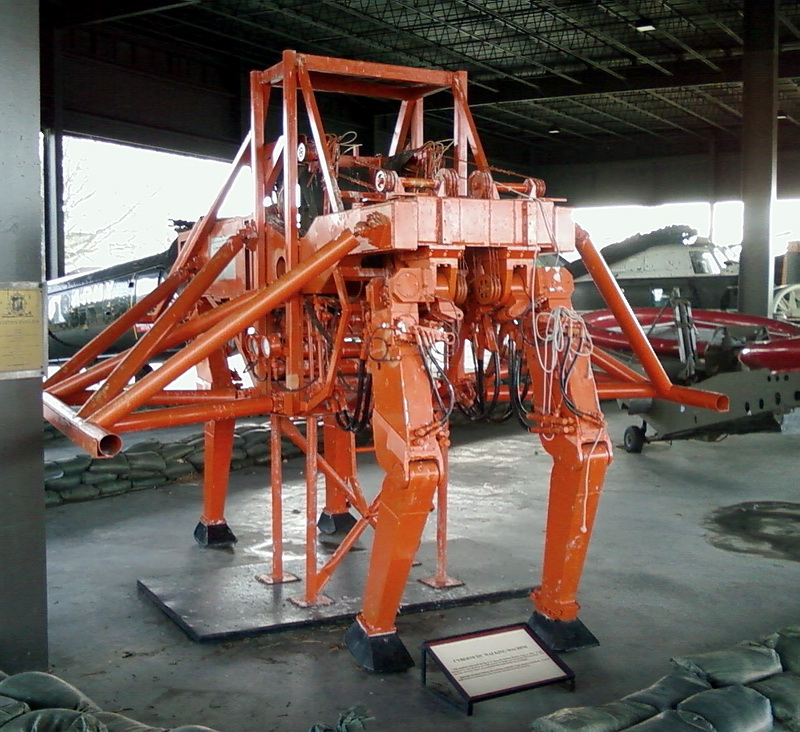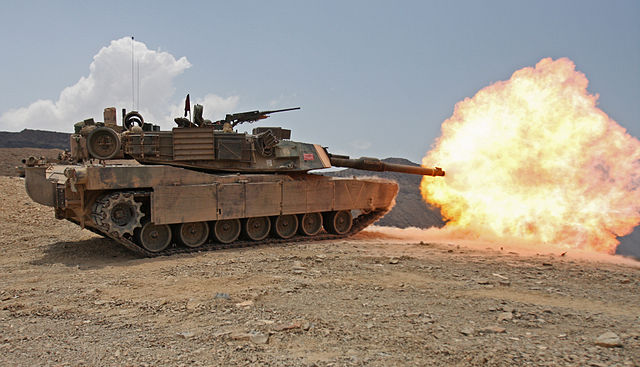Why Walking Tanks Never Became A Thing [Hackaday]

The walking tank concept has always captured imaginations. Whether you’re talking about the AT-AT walkers of Star Wars, or the Dreadnoughts from Warhammer 40,000, they are often portrayed in fiction as mighty and capable foes on the battlefield. These legged behemoths ideally combine the firepower and defense of traditional tanks with the versatility of a legged walking frame.
Despite their futuristic allure, walking tanks never found a practical military application. Let’s take a look at why tracks still rule, and why walking combat machines are going to remain firmly in the realm of fiction for the foreseeable future.
A Flawed Concept

World War I saw the dawn of the tank, which quickly proved to be a game-changer on the battlefield. The huge tracked machines offered an excellent way to break stalemates in trench warfare. Tanks had big cannons and machine guns that could blast away fortifications and unprotected troops alike, while they offered significant protection against small arms fire for the crew inside. They also the ability to progress through soft, muddy terrain by virtue of the low ground pressure created by using tracks instead of wheels.
Tanks, however, have their drawbacks. They’re not always great at dealing with obstacles or highly uneven terrain. Relatively simple fortifications like dragon’s teeth can easily stop a tank push, while potentially presenting little difficulty for a walking machine to deal with. For dense, obstacle-ridden areas, like forests or mountain paths, it’s easy to imagine the value of a walking tank that could step over things that would frustrate a modern tank.
Realistically, walking tanks would have a plethora of vulnerabilities in combat scenarios. Intricate leg mechanisms would make them highly susceptible to damage from enemy fire. Furthermore, any hits to a leg would leave the machine potentially unbalanced, or cause it to tip over. It happened in MechWarrior, and it would happen in real life, too. Blow a leg off, and you’ve got an easy mission kill. In comparison, blow off a tank track, and the vehicle remains upright and generally relatively repairable.

The walking form factor also presents other problems. Besides sheer mechanical complexity and maintenance concerns, it’s difficult to imagine a walking tank that could be anywhere near as low to the ground as a modern main battle tank. Modern designs aim to be as low profile as possible to make them difficult to engage. An ungainly tall walker could readily be spotted and fired upon at a much greater distance than a low-slung tank that can more easily use terrain as cover.
With the emergence of aerial warfare, precision weaponry, and advanced anti-tank weapons, modern ground units benefit greatly from high mobility. Indeed, the value of speed to mechanized combat has been obvious since World War II. Not only would a walking tank struggle to maneuver quickly to respond to enemy fire, it would struggle to keep up with a modern army consisting of regular tanks, armored personnel carriers, and trucks. At best, one could imagine a walking tank maybe achieving a “jog” of 10 to 20 km/h. Leaving aside the potentially horrid ride for anyone on board, that compares poorly to even the heaviest tanks currently in service. Modern designs can readily hit top speeds of 70 km/h or more.
It also bears thinking about the actual benefits conferred by a walking design. Barring certain passive anti-tank defences and such, how common are situations where a walking tank would be able to proceed where a tracked tank wouldn’t? Then, contrast that against how easy it would be to make defences that trip up a walking design. We’ll take your best answers in the comments below.
A Footnote in History

Despite the flaws of the idea, the concept has not gone entirely ignored by the military fraternity. The frantic heights of the Cold War era actually saw the idea of a walking military vehicle explored by General Electric in the 1960s. This resulted in the GE Walking Truck, as designed by Ralph Mosher, also known as the “Cybernetic Anthropomorphous Machine” (CAM). Weighing 1,400 kilograms, it was intended to help carry equipment for infantry over rough terrain. The prototype was unarmored and unarmed, serving merely as a proof of concept.
The Walking Truck was controlled by an operator seated inside. The operator would maneuver the machine’s legs with foot and hand movements which activated hydraulic valves, controlling the limbs of the machine. It was one of the first machines to use force feedback controls to aid the operator. The walking mechanism allowed the CAM to walk across varied terrains and carry heavy loads. However, it was painfully slow, with a top speed of just eight kilometers per hour. It also suffered from high power consumption, and was mentally taxing for its operator to drive.
Despite its impressive stature, the Walking Truck was simply not a practical military vehicle. It wasn’t up to its intended task of hauling equipment, let alone serving in any sort of combat role. Even then-ancient tanks from the interwar period would thrash the Walking Truck in a speed contest.
The Walking Truck benefited from force feedback controls that helped the operator intuitively understand what its limbs were doing. This gave it great finesse, but it was mentally exhausting to operate.
Today, we have far more advanced motion control technology, sensors, and controls. Walking robots have also come a long way from the janky experiments of the 20th century. It’s easy to imagine many of the control issues being eliminated in a modern design that could automate the walking task for the operator with sensors and control loops. Regardless, the fundamental flaws of a walking platform would remain.
Indeed, Boston Dynamics would go on to to develop a range of legged robots aimed to do a similar job to the Walking Truck on a smaller scale. The BigDog prototype was eventually developed into the Legged Squad Support System, which helped explore the value of a robotic pack mule to aid dismounted soldiers on the ground. The ability of the robot to work in similar terrain to a walking soldier was of great benefit, but ultimately, the concept was deemed impractical for operational use. Concerns around repairability, control, and utility led to an end of the program in 2015.
Fiction Vs. Reality

The limitations of walking machines are so pervasive, it’s no surprise walking tanks have never been built nor deployed in combat. Even in the world of fiction, their limitations and ungainly nature is obvious. In as much as the AT-AT Walkers looked devastating in Star Wars, it’s easy to imagine a small cadre of modern tanks speeding into position in the snow and firing off a few rounds before the legged behemoths could even turn to face them.
The same goes for the battle mechs of MechWarrior fame. It’s hard to imagine a 14-meter tall mech surviving long when a shell impact to the head would probably topple over even the most well-armored two-legged design. Indeed, these flaws apply to just about any walking tank design you can imagine, barring near-mythical flying designs from anime that are basically another whole thing entirely.
In this real world we live in, the efficiency, ruggedness, and simplicity of regular tracked tanks reigns supreme. As foreboding as walking tanks might look in fiction, they simply would never pose a serious threat in any real combat situation.

![why-walking-tanks-never-became-a-thing-[hackaday]](https://i0.wp.com/upmytech.com/wp-content/uploads/2023/10/145084-why-walking-tanks-never-became-a-thing-hackaday-scaled.jpg?resize=800%2C445&ssl=1)